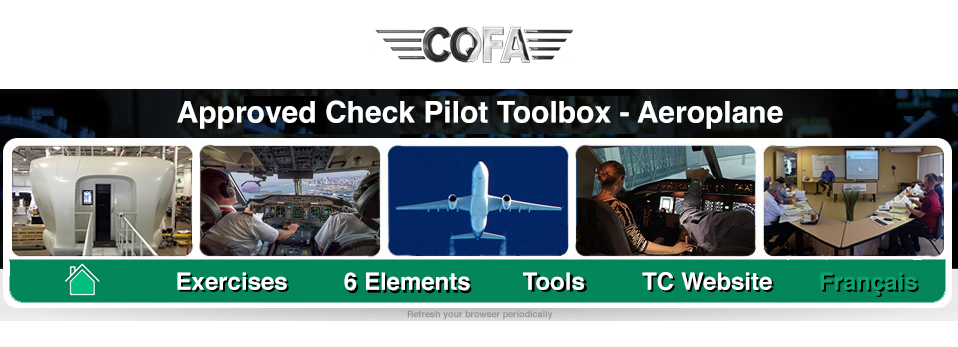12. Approaches to Stall
Aim
Determine the candidate’s ability to recognize and recover smoothly and correctly from an approach to a stall in various configurations with a minimum loss of altitude.
Description
For the purpose of this manoeuvre, the required approach to a stall speed is the speed at which there is a perceptible buffet or other response to the initial stall entry. When performed in an aeroplane, conduct the approach to stalls at an altitude of at least 5000 feet AGL, and if above cloud at an altitude of at least 2000 feet above the cloud tops.
Initial and upgrade PPC's require the following approaches to the stall:
- one in the take-off configuration, except where a zero-flap take-off configuration is normally used in that model and type of aeroplane;
- one in a clean configuration; and
- one in a landing configuration.
Perform one of the approaches to stall while in a turn with a bank angle of between 15° and 30°.
For 704 and 705 PPC’s conducted in a flight training device, ACPs need not evaluate approach to stalls when the PPC follows either a LOFT scenario, a scripted PPC or is for a fly-by wire aeroplane; and:
- for an initial PPC on aeroplane type, approach to stalls have been satisfactorily demonstrated during initial training;
- for semi-annual or an annual PPC:
- approach to stalls required in the applicable annual training syllabus were satisfactorily demonstrated during this training; or
- approach to stalls are not part of the applicable annual training syllabus.
Performance Criteria
(06/2017 FTG p.28) Assess the candidate’s ability to:
- recognize the first indication of an approach to a stall (as listed in the Description section above);
- disconnect autopilot and autothrottle (if installed and engaged);
- apply nose down pitch control until indications of stall and/or stall warning significantly diminish or disappear, and trim as needed;
- roll to wings level using ailerons and apply rudder only as necessary to control sideslip;
- add or adjust power/thrust as needed;
- carry out configuration changes as recommended and ensure that speed brakes/spoilers (if installed) are retracted;
- recover to a safe airspeed and stabilized flight; and
- ensure that the aeroplane is in a suitable configuration by checking pertinent items from an appropriate checklist.
Commenting a "1"
- No recovery attempted despite warnings. Altitude loss ______ feet.
- Power settings during recovery not according to SOP/published procedure, resulted in excessive altitude loss _____ feet.
- Did not check traffic safety before initiating approach to stall. Attention focussed inside the cockpit only.
- Over controlled the recovery, resulting in a secondary stall.
- Unable to approach stall angle despite ____ attempts. The objective of the exercise was not met.
- Excessive heading deviation during approach to stall and recovery not perceived or corrected even after levelling off.
- Flap selection incompatible with published recovery procedure in SOP.
- Forgot to select Gear Up as per SOP.
- Never climbed back to initial altitude.
Commenting a "2"
- Recovery initiated late resulting in excessive altitude loss followed by immediate climb to initial altitude.
- Full power not applied immediately resulting in excessive altitude loss followed by immediate climb to initial altitude.
- Traffic check only performed when prompted by other crewmember.
- Excessive deflection on flight controls resulted in excessive altitude loss followed by immediate climb to initial altitude.
- Large heading deviation during recovery, but initial heading re-established once aircraft back at cruising altitude. ATC advised.
- Hesitation regarding flap configuration resulted in a slow recovery. Remainder of stall recovery as per SOP.
- Hesitation regarding landing gear configuration resulted in a slow recovery. Remainder of stall recovery as per SOP.
- Only climbed back to assigned altitude after being prompted by other crewmember.
